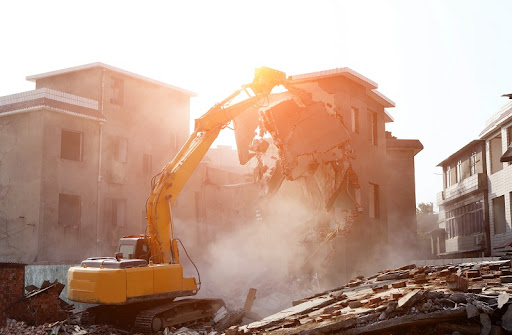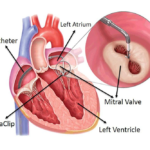Demolition is the systematic dismantling or destruction of a building or structure using controlled methods and specialized equipment. It plays a vital role in urban development, infrastructure upgrades, and land redevelopment. Whether you’re clearing space for new construction or removing a hazardous structure, understanding the demolition process is essential.
This article dives into the types of demolition, the process involved, safety practices, and why hiring a professional demolition contractor matters.
What is Demolition?
In simple terms, demolition is the act of tearing down buildings and other man-made structures. It’s often required when structures become unsafe, obsolete, or are no longer needed. Unlike deconstruction, which focuses on salvaging materials, demolition is generally quicker and more efficient, especially for large-scale projects.
Why Demolition is Necessary
There are several reasons why property owners, developers, and municipalities choose demolition:
-
Structural damage beyond repair
-
Urban redevelopment or rezoning
-
Safety hazards like asbestos or mold
-
Space optimization for new construction
-
Old infrastructure no longer compliant with building codes
Types of Demolition
Demolition methods vary depending on the type of structure, location, and project scope. Here are the most common types:
1. Manual Demolition
This method uses handheld tools like hammers and jackhammers to dismantle small structures. Manual demolition is often used for residential projects, interior demolition, or partial demolition jobs where precision is important.
2. Mechanical Demolition
One of the most common types, mechanical demolition involves heavy machinery such as:
-
Bulldozers
-
Wrecking balls
-
Hydraulic excavators
-
Skid-steer loaders
This method is ideal for large-scale commercial or industrial demolitions, offering speed and efficiency.
3. Controlled Demolition
Controlled demolition uses explosives to bring down buildings in a safe and calculated manner. This type is commonly used in:
-
High-rise building demolition
-
Bridge demolition
-
Stadium demolitions
Controlled demolition requires extensive planning and expert execution, minimizing risk to surrounding areas.
4. Deconstruction (Selective Demolition)
Unlike full demolition, deconstruction involves carefully removing parts of the structure to reuse or recycle materials. Though more time-consuming, it’s a sustainable choice for environmentally conscious projects.
The Demolition Process: Step-by-Step
Demolishing a structure isn’t as simple as knocking it down. It involves a series of well-planned steps:
1. Site Assessment
A thorough site assessment helps determine the best demolition method. Factors include building size, location, materials, and any potential hazards (like asbestos or lead).
2. Permits and Legal Compliance
Before demolition begins, permits must be obtained from local authorities. This includes environmental clearances, zoning laws, and safety regulations.
3. Utility Disconnection
Gas, water, electricity, and sewer lines must be disconnected to avoid hazards during demolition.
4. Hazardous Material Removal
If asbestos, lead paint, or mold is present, a certified contractor must remove these materials safely.
5. Demolition Execution
Once all preparations are complete, the demolition team proceeds using the chosen method. Safety personnel are on-site to monitor the process.
6. Waste Management and Site Cleanup
Debris is collected, sorted, and either recycled or disposed of. Responsible demolition contractors prioritize recycling to reduce landfill waste.
Key Demolition Equipment
Demolition requires specialized tools and machinery, including:
-
Excavators with shears, breakers, and crushers
-
Skid steers for maneuverability in tight spaces
-
Wrecking balls for older concrete or steel buildings
-
High-reach arms for tall structures
-
Dust suppression systems to control air pollution
Safety in Demolition
Demolition can be dangerous if not handled correctly. Key safety practices include:
-
Comprehensive planning and hazard assessment
-
PPE (Personal Protective Equipment) for all workers
-
Fall protection systems
-
Dust and noise control
-
Continuous monitoring during demolition
Hiring a professional demolition contractor ensures compliance with OSHA standards and local safety codes.
Residential vs. Commercial Demolition
Residential Demolition
-
Typically involves house demolition or garage removal
-
Quicker timelines (1–3 days)
-
Often done manually or with light machinery
-
Less paperwork but still requires permits
Commercial Demolition
-
Involves office buildings, malls, factories, etc.
-
Requires extensive planning and environmental assessments
-
Uses heavy machinery and sometimes explosives
-
Larger crews and longer timelines
Hiring a Demolition Contractor
Choosing the right demolition company is critical to the success of your project. Here are some tips:
-
Look for licensed and insured contractors
-
Ask for references and past project portfolios
-
Ensure they follow eco-friendly disposal practices
-
Get a detailed cost estimate and timeline
A professional contractor will handle everything from permits to cleanup, giving you peace of mind.
Cost of Demolition
Demolition costs vary based on several factors:
-
Size and type of the structure
-
Location and accessibility
-
Presence of hazardous materials
-
Method of demolition
On average, house demolition costs can range from $5,000 to $25,000, while commercial projects may run into hundreds of thousands of dollars.
Environmental Considerations
Modern demolition focuses on sustainability:
-
Recycling concrete, wood, and steel
-
Proper disposal of hazardous waste
-
Using low-emission equipment
-
Following LEED and green building standards
Choosing eco-friendly demolition practices helps reduce the environmental impact.
Conclusion
Demolition is a complex yet necessary part of construction and urban development. Whether it’s a small house or a high-rise building, the key to successful demolition lies in planning, safety, and hiring qualified professionals.
By understanding the different types of demolition, the equipment used, and legal requirements, you can ensure your project runs smoothly, safely, and sustainably.
For your next demolition project, consult with an experienced contractor who understands the intricacies of safe and efficient demolition.





